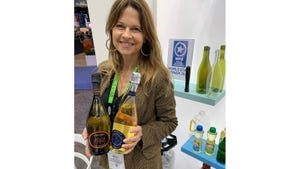Purac stakes out major bioplastics role; medical apps eyed
In a move to give customers security of supply, and to mirror the success it already has achieved in Europe, lactic acid supplier Purac (Gorinchem, Netherlands) is building a $20.8 million manufacturing facility in the United States to support its growing resorbable polymers business.The company currently operates a plant for biomedical polymers in the Netherlands.
October 18, 2011
Besides an increase in the production capacity, Purac said the new facility would provide flexibility and a more balanced presence in its global markets.
Menno Lammers, director of Purac Biomaterials, said, "As an experienced supplier to pharmaceutical and medical device companies, we understand the importance of guaranteed supply continuity. Over the last years, the importance of risk management has increased and with this facility we will be in the unique position to provide our customers with dual sourcing."
The Purac Biomaterials business comprises lactide-based polymers such as polylactic acid (PLA) and lactide/glycolide copolymers (PGLA). The technology developed for Purac's biomedical polymers also forms the basis for Purac's activities in L- and D-lactides for bioplastics including PLA.
The materials are used in medical devices such as anterior cruciate ligament screws and cardivascular stents, and in pharmaceutical products for controlled release formulations. Purac says its customers include most of the top 10 medical and pharmaceutical companies.
Tune in for improved properties
Lactide-based polymers have tunable properties, such as degradation time and mechanical strength. Custom formulations are an important part of Purac's business. The polymers degrade by hydrolysis and are eliminated by the human body.
For applications such as screws, polymers have a temporary function, allowing the tissue to heal and resume its original function before the implant loses its mechanical integrity. The resorption time can be tuned by tailoring the molecular weight, the crystallinity and the hydrophilicity of the polymer. Degradation time can be programmed for anywhere from roughly two weeks to two years.
Construction of the new American plant is one of several major moves by Purac to boost its position in the bioplastics business. They include:
An announcement Aug. 1 to work with BASF to become a major global producer of biobased succinic acid, a precursor for bioplastics and other products. "We aim to be the first commercial producer in the market with a 25,000 tons capacity fermentation production plant at the Purac site near Barcelona, Spain, with the intention to start up by 2013 at the latest," said Gerard Hoetmer, chief executive officer of CSM, Purac's parent company. "In addition, we are already planning a world-scale plant with a capacity of 50,000 tons to account for the expected demand growth."
Purac and Arkema announced a collaboration to develop functional lactide-based block copolymers with enhanced thermal and physical properties. These copolymers are produced by combining Arkema's organic catalysis ring-opening polymerisation technology with Purac's L- and D-lactide monomers. The outcome could be PLA plastics that can take on durable engineering applications, competing against ABS.
Purac is building a 75,000 ton lactide plant in Thailand. It is designed to produce both L-lactides and D-lactides made out of lactic acid sourced from existing Purac plants. Last week PLA supplier NatureWorks, the Minnetonka, Minnesota-based supplier of the Ingeo brand of polylactic acid-based bioplastics, announced that Thailand is the preferred location for its next Ingeo manufacturing facility.
Purac says the next generation of PLA will have heat resistance up to 180°C (356°F). Compounder FKuR (Willich, Germany) and Purac partner Synbra (Etten-Leur, Netherlands) are targeting even higher thermal resistance for PLA. They say that a stereocomplex PLA can be formed with a melting temperature of around 220°C. Conventional PLA has a melting temperature now of around 170°C.
You May Also Like


